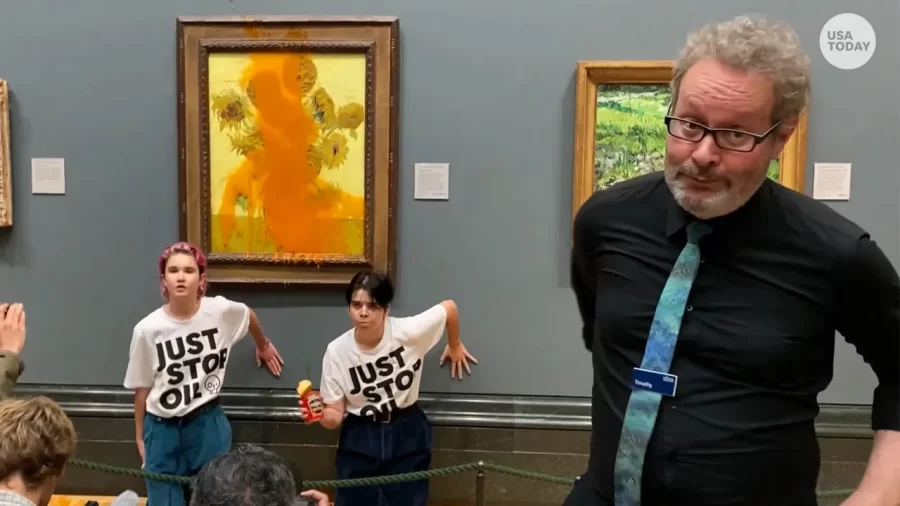Soup on Paint
Tomato soup on Van Gogh
October 17, 2022
Earlier this October two young activists entered London’s National Gallery, flung Tomato soup on to Vincent van Gogh’s ‘Sunflowers’, and then proceeded to glue their hands to the wall – proclaiming that art is valued above the environment.
The activists said their intent was to spread “environmental awareness,” and provoke governments to support environmental protection, but this outrageous spectacle brought only negative reactions and presented no correlation towards its cause.
This was not the first bizarre protest targeting art. Earlier this year a man disguised as an elderly woman jumped out of a wheelchair and smeared cake on the Mona Lisa.
Another incident took place in Australia, where two protesters glued their hands to the perspex covering a Picasso painting. While none of the paintings were harmed thanks to their protective glass, the displays of aggression towards art have upset many.
In a Perspective by Philip Kennicott, chief Art and Architecture Critic of The Washington Post wrote, “When I see activists attack art, I feel the same revulsion most people do — and the sense of revulsion seems to be general and widespread… Throwing tomato soup on a Van Gogh won’t make me feel any more passionately about saving our planet, nor will it help me think more pragmatically about how to do that.”
Instead of spreading awareness about our environment these protests are viewed as eccentric, unorthodox, and plainly childish.
Will victimizing great works of art invoke a better economy or policies to fight climate change? Why victimize art to begin with? – Phillip Kennicott
A Firstpost article explains the answer is simply for publicity, and that art is targeted because their slogan asks whether the preservation of art is more important than the preservation of the environment, but such a question is unreasonable, “We might productively think about art as a form of embodied culture — energies already released and captured in an object. If art is merely a symbol, or a commodity, or a luxury good, then it’s reasonable to ask whether we care more about art or the environment. But if art is embodied culture, we are compelled to consider its preservation and lasting value even during times of peril,” said Kennicott.
These activists say they are attacking art because they wish to make a loud, global, statement, and that they have, but is it really the right kind of statement to make a change?





